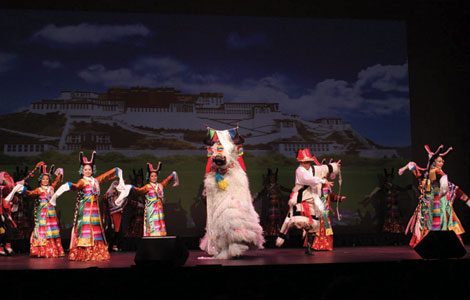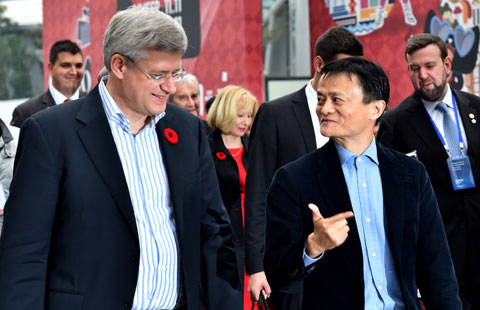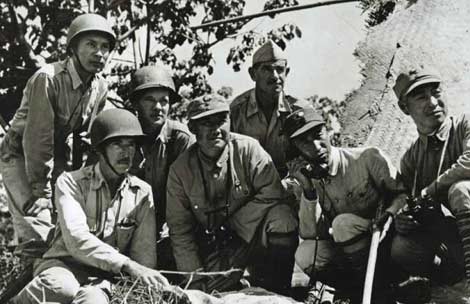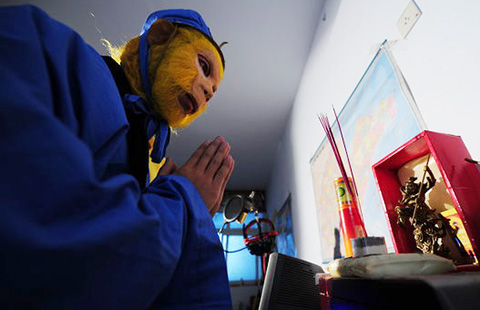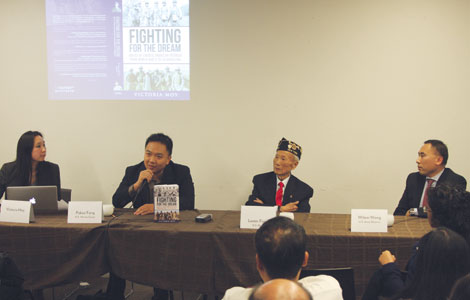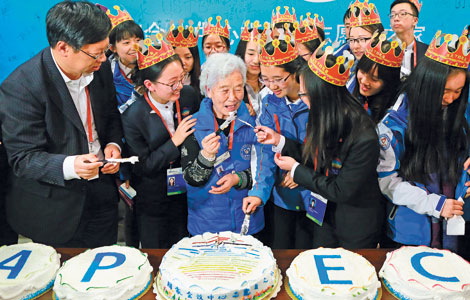A history largely forgotten
Updated: 2014-11-07 13:01
By Cai Chunying(China Daily USA)
|
||||||||
|
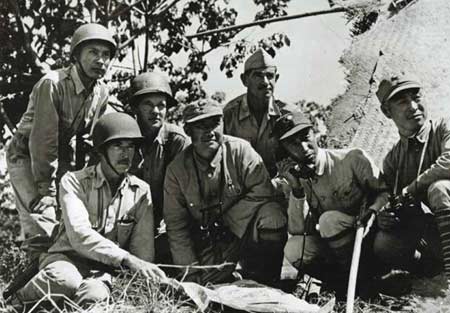 This photo is one of the 23,000 photos stored by the US National Archives about the US' participation in the China-Burma-India Theater during World War II. To the left is the original caption slip pasted on the back of the photo. It reads: Liaison Officers of the Y-Force staff and Chinese Army Officers check the progress of Allied artillery fire from an observation post overlooking Tengchong in Southwestern China. Gateway to Burma, the ancient walled city was liberated on September 14, 1944 by Chinese forces aided by Y-Force men and US airmen. |
While reviewing those old photos, Zhang and his team noticed something unusual. One photo showed a battlefield funeral service conducted by American military staff. Even after several years of doing research on the Chinese Expeditionary Force, Zhang did not know that Americans had lost their lives in combat in that area.
Moved by the sacrifice of the soldier in that photo and believing that it might shed light on his research project, Zhang and his team became determined to identify the soldier.
They were told that in the nearby Memorial Garden of Tengchong, which was built after the war to commemorate the thousands of Chinese soldiers killed in battle, a special tomb stone had been erected for 19 American soldiers killed during the campaign. The monument, however, listed only one of the soldier's names and it was in Chinese.
Unable to find anything about the soldier's identity in China, Zhang's search extended to the US. A historian friend of Zhang's in Connecticut managed to find someone who could help, Colonel John Easterbrook, the grandson of Stilwell, the CBI's commander.
Easterbrook had been researching his grandfather's life in the CBI for many years. His father was also involved in the campaign as executive officer for Stilwell and served as liaison between the general and his Chinese units. Easterbrook was excited by the discovery of that photo.
At the Hoover Institution at Stanford University and with the help of the US Defense department's POW/Missing Personnel Office, a casualty list of 19 soldiers of the US Army during the Salween Campaign was discovered. The first name on the list matched the only name on the tomb stone.
Easterbrook obtained from the Defense department information about relatives of the 19 soldiers. After much efforts to contact them, one family responded. It was the two daughters of Major William McMurrey, the highest-ranking American officer who was killed in that campaign.
Barbara Hyde, the older daughter, wrote to the search team and shared the letter written by her father's immediate commander, Colonel John Stodter, on May 21, 1944, the day after McMurrey died. Stodter was near him when he was killed in action.
The letter was addressed to Barbara's mother, who died in 1996:
"Major McMurrey was on duty as Liaison Officer with a Chinese Regiment of the C.E.F (Chinese Expeditionary Force) with the mission of training our Chinese allies for offensive combat and assisting them therein against our common enemy the Japanese."
It pays tribute to McMurrey's sacrifice:
"Indeed his death served to bind more firmly in this division the mutual support between Chinese and Americans which must obtain to confirm in the post war world a lasting peace."
Most Viewed
Editor's Picks

|

|

|

|

|

|
Today's Top News
Sultan of Brunei acquires NYC's Plaza Hotel
Mexico cancels bullet train deal
China, Japan reach four-point agreement on ties
China's wealthy look to make 'social impact' on education
Airline exec sees bright side for China and US
China, US must lead on climate
China's coal solution could be in steam
Asian Americans supported Democrats in elections
US Weekly

|

|

